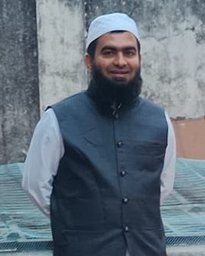Biggest counterfeit Indian art controversy hits auction
05:25AM Fri 27 Jun, 2014

BANGALORE: Bangalore-based Bid & Hammer's forthcoming auction has been assailed by what, perhaps, is the biggest controversy to come to light in the Indian art market, writes Neelam Raaj.
Questions have been raised about the authenticity of several artworks by celebrated artists Rabindranath Tagore, Nandalal Bose, K K Hebbar, Bikash Bhattacharjee, Hemendranath Majumdar and K H Ara. Even as Rabindranath Tagore's pen and ink of three dancing figures lies in the vaults of Visva Bharati in Shantiniketan, an identical-looking work will come up for auction in Delhi on Friday. Nandalal Bose's painting of a woman sitting under a tree hangs on the walls of the National Gallery of Modern Art in Delhi but a similar work has made its way to the auction catalogue. A copy or two has cropped up in the most respected of auction houses but Bangalore-based Bid & Hammer's forthcoming auction has been assailed by what perhaps is the biggest controversy to
come to light in the Indian art market. Beside the Tagore and Bose works, questions have been raised about the authenticity of several other pieces by celebrated artists like K K Hebbar, Bikash Bhattacharjee, Hemendranath Majumdar and K H Ara. Rukhsana Pathan Ara, daughter of the famous
Progressive artist, calls one of the paintings on sale "an insult to
Ara's oeuvre". "There are a lot of Ara fakes around because people tend to think
his style is simple. But that's deceptive, and this one is easy to tell," says Rukhsana, who has a large collection of her father's works.
The Tagore work that is raising eyebrows is titled Nritya and dated 1933. "The work is locked up in our vaults, and it is extremely unlikely that Tagore would have painted two identical works in the same year,'' says Susobhan Adhikary, curator of the Kala Bhavan museum of Visva Bharati. Professor R Sivakumar, an art historian who has authored a book on Tagore's works, also points out a discrepancy in dates. "If the book, the cover art of which is in the auction, was published in 1949, how did Tagore do a cover in 1993?" asks Sivakumar. Another Tagore work that is under a cloud is an untitled portrait of a lady. Jamini Roy was once known as the country's most faked artist but Tagore seems to be quickly catching up.
In 2011, a counterfeit racket was busted at a Kolkata art college, and its principal arrested. But fake factories, which usually use art college students, are still flourishing, says Adhikary, who walked into a show of 40 Tagore works last month and found that most of them were fakes. The family of Bikash Bhattacharjee, a cornerstone of the Bengal school of art, has also doubted the veracity of two works. "The signature does not match," says Balaka Bhattacharjee, the
painter's daughter. TOI made several attempts to contact Bid & Hammer's chairman and managing director M Maher Dadha but there was no response. The auction house was caught in a similar controversy in 2010 over the veracity of a Souza work. Some prominent art industry representatives have called for the
creation of a regulatory authority to address concerns regarding the sale of fake works to unsuspecting consumers. "The recent alarm with regard to the authenticity of works by masters at a forthcoming auction has sent alarm bells ringing once again. We need to look at how we can regulate this," said Ashish Anand, owner of Delhi Art Gallery and one of the signatories. Rajani Prasanna Hebbar, an art historian and the painter's daughter who authenticates his work, says the work that features in the auction catalogue has not been authenticated by her or her sister. She also adds a cautionary word for collectors. "Don't blindly trust the certificate of authenticity. Unscrupulous people are handing out these for a price so rely on someone who is an expert on the artist,'' says Rajani, who has taught art history for 20 years.
-TOI










